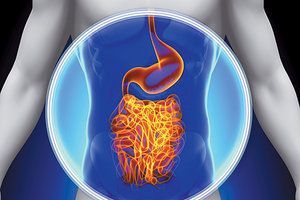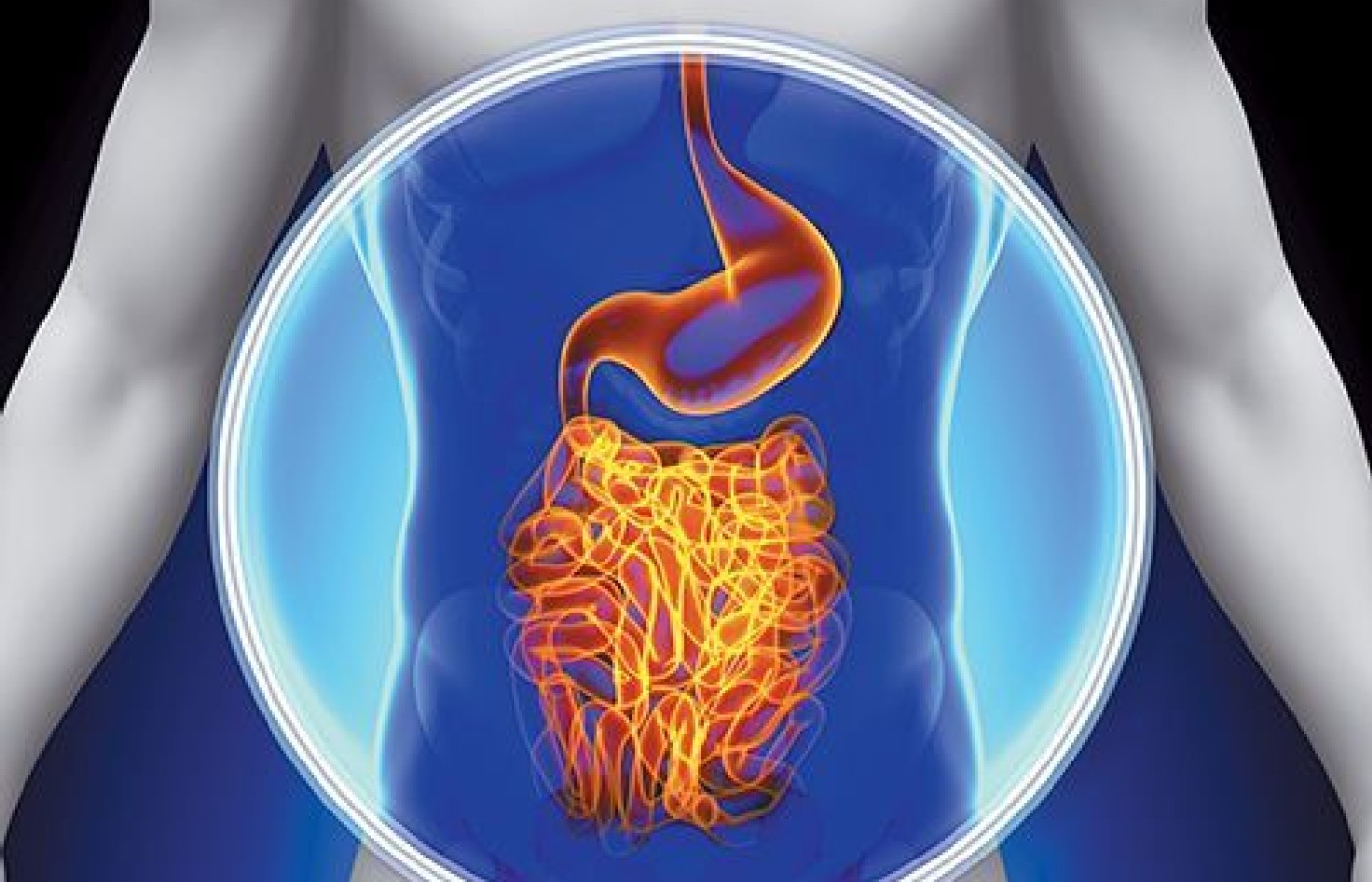It is estimated that 61% of patients with CTS avoid taking surgical options due to postoperative complications and costly surgical procedures. Chiropractic care offers a comprehensive and effective treatment for carpal tunnel syndrome, addressing the condition from multiple angles. Recent studies also have unveiled a game-changing adjunct to chiropractic treatments for CTS: nerve flossing.
A Vibrating Capsule for Constipation? Relevance to Your Chiropractic Practice
The relationship between gastrointestinal (GI) complaints and back pain is not typically written about or discussed. However, this is an important issue because GI complaints are a common condition in general; and for women in particular, GI complaints are associated with low back pain.
But instead of helping sufferers to really address the numerous lifestyle issues that promote constipation, which will be discussed shortly, modern science would like us to instead consider the "vibrating capsule.
The Latest "Solution" for Constipation: A Vibrating Capsule?
What will they possibly think of next? Here is how it works: Patients swallow a capsule that contains a tiny receiver and vibrating mechanism. Eight hours later, the capsule is activated by an external transmitter that generates three pulses per minute to imitate the internal pacemaker of the colon.
Twenty-six of 28 patients completed a study investigating the effectiveness of this capsule. The outcome was an increase in bowel movements from about two per week to four per week.1
Improving Bowel Habits Naturally: Nutritional Options
As chiropractors, we would not be able to prescribe such a device ... and would we really want to? I suppose it might be useful for patients who are pursuing constipation as a lifestyle and refuse to adopt healthy habits. It might also be useful for those who do try everything else and continue to suffer. However, save for these individuals, most people can dramatically improve bowel habits simply by adopting healthy behaviors.

Unfortunately, when it comes to diet, the typical recommendations from various organizations are actually "constipation-promoting." Consider that the DASH diet for hypertension recommends we consume between 6-12 servings of grains and grain products per day, but only three servings need to be whole grains. This means we should eat between 3-9 servings of refined grains per day.
This is the same recommendation as the food pyramid diet. Clearly, anyone with constipation should eat virtually no refined grains. In other words, make every calorie count to help fight constipation.
So, what should we eat? On a caloric basis, vegetables and fruit are substantially higher in fiber than whole grains. Prunes happen to be a historical favorite for reducing constipation, and have been shown to be effective in that regard.2
Psyllium husk powder is also quite effective and delivers no caloric penalty. For the treatment of irritable bowel syndrome with psyllium fiber, 20 grams is a supplemental target, which has been shown to be superior to 10 grams. And this dosing level improves constipation, abdominal pain and diarrhea.3 Some people need less psyllium fiber and others need more.
Adequate hydration should also be emphasized in general and especially when taking psyllium husk, as it absorbs water. A Medscape review states that psyllium is arguably the best treatment for long-term constipation.4
Magnesium citrate is often prescribed as an osmotic laxative; the over-the-counter medication Citroma is an example. In my opinion, magnesium should be viewed in the context of adequacy, rather than as an osmotic laxative monotherapy. A better approach would be to acknowledge that the majority of Americans do not consume the RDA for magnesium,5 which means we should improve magnesium status with diet and supplementation.
Vegetables, fruits, nuts and sweet potatoes contain magnesium and fiber. Supplemental magnesium in the context of achieving adequacy need not take into consideration the need to generate an osmotic laxative effect, because the goal should be to help a patient realize normal bowel habits. In other words, magnesium malate, aspartate, amino acid chelates, etc., can be utilized.
Between the combination of diet and supplements, the target should be approximately 1,000 mg of magnesium per day to achieve a positive magnesium balance.
More Practice Relevance: Constipation and Back Pain
Smith, et al., published an interesting study on this topic.6 They examined the data from the Australian Longitudinal Study on Women's Health, which included 38,050 women. Back pain was reported "rarely," "sometimes" and "often." Interestingly, women who did not have back pain were more likely to report no gastrointestinal symptoms. In contrast, women with 1-3 GI symptoms were more likely to have back pain that was characterized as "often."
Additionally, the frequency of "often" back pain increased with the number of GI complaints. The most common GI complaint was constipation. According to the authors, irritable bowel syndrome (IBS) is also associated with a greater expression of back pain.
Several possible mechanisms were proposed for the relationship between GI symptoms and low back pain. First, GI motility may be abnormally altered by musculoskeletal pain. Second, reduced spinal stability may promote low back pain and provide less support to the abdominal contents. Third, visceral nociception from the gut, due to constipation, may converge on spinothalamic neurons that otherwise transmit nociceptive input from low back nociceptors.6
Missing from this list of possible causes is the fact that GI problems, such as IBS, which can involve constipation, diarrhea or both, are associated with the absorption of bacterial antigens.7 The systemic immune response to such antigens can be musculoskeletal pain and additional flu-like symptoms of fatigue, anxiety, depression and impaired cognition.7
The issue of constipation and back pain is obviously a relevant issue. And chiropractors treat more women than men, and constipation is a significant problem for many women, which may promote chronic back pain and render these individuals less responsive to chiropractic manual care.
Other Considerations
Psychological issues are also very important to consider when it comes to constipation. Infants will literally eat and then have a movement, which is a normal reflexive response. Adults should be reassured that both the problem and retaining approach are normal.
Adults should consider the behavior of their children. Little kids tend to follow the call of nature. However, as they age, many suppress the urge to defecate for social reasons. The denial of this urge can ultimately lead to constipation, such that retraining is often required to recognize, respect and follow-through on the call.
Several factors are directly related to increased colonic activity, of which patients should be made aware. These include waking up in the morning, physical activity, and eating. Medline Plus also has helpful advice.8
To learn more about the epidemiology of constipation, several review articles on the topic are worth reading.4,9-10
References
- Helwick C. "'Good Vibrations' Might Ease Constipation." Gastroent Endoscopy News, 2014;65:7. Reporting on Digestive Disease Week 2014 (abstract Sa2023).
- Attaluri A, Donahoe R, Valestin J, Brown K, Rao SS. Randomised clinical trial: dried plums (prunes) vs. psyllium for constipation. Aliment Pharmacol Ther, 2011;33(7):822-8.
- Kumar A, et al. Optimum dosage of ispaghula husk in patients with irritable bowel syndrome: correlation of symptom relief with whole gut transit time and stool weight. Gut, 1987;28:150-55.
- Basson MD. Constipation: Practice Essentials. Medscape.com, updated Jan. 21, 2014.
- Ford ES, Mokdad AH. Dietary magnesium intake in a national sample of US adults. J Nutr, 2003;133:2879-82.
- Smith MD, Russell A, Hodges PW. How common is back pain in women with gastrointestinal problems? Clin J Pain, 2008;24:199-203.
- Lin HC. Small intestinal bacterial overgrowth: a framework for understanding irritable bowel syndrome. JAMA, 2004;292:852-58.
- Bowel Retraining. Medline Plus; U.S. National Library of Medicine, National Institutes of Health.
- Johanson JF. Review of the treatment options for chronic constipation. MedGenMed, 2007;9(2):25.
- Hsieh C. Treatment of constipation in older adults. Am Fam Phys, 2005;72:2277-84.



